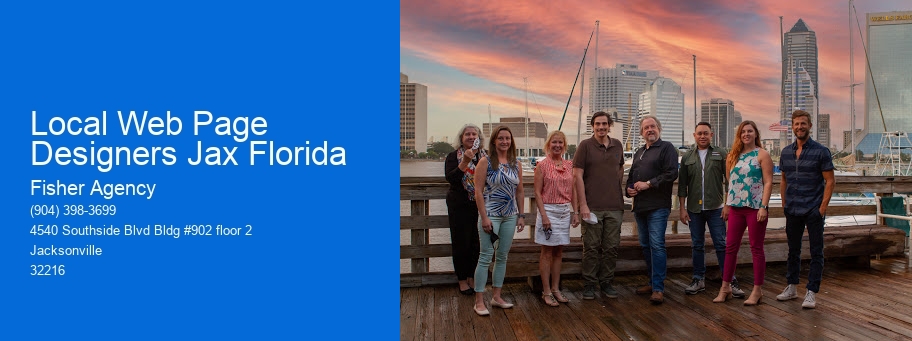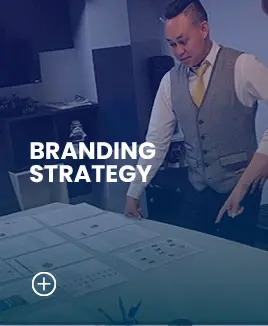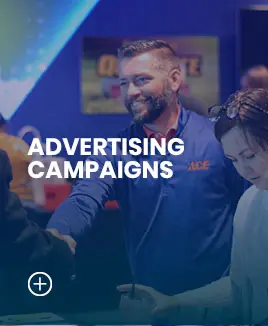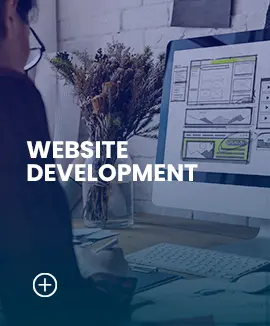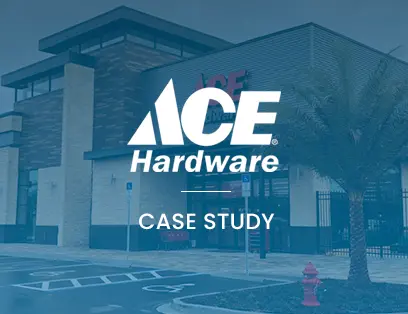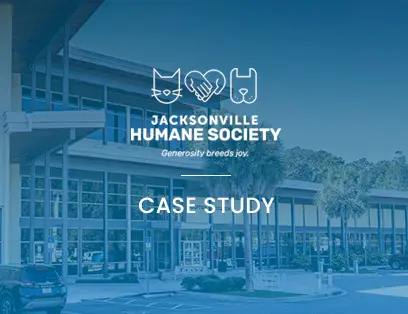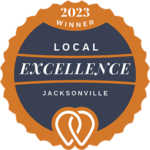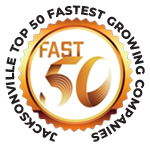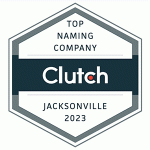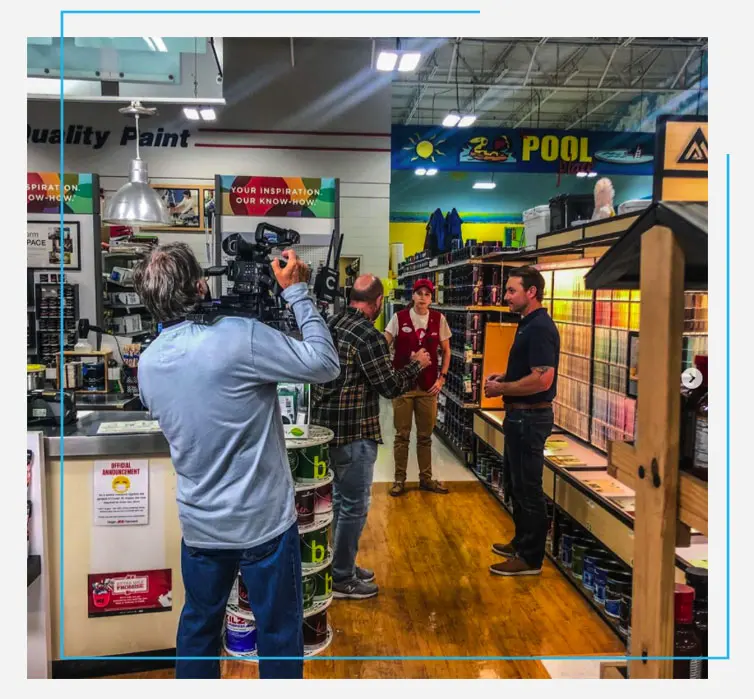Are you looking to grow your business through lead generation? Maybe you need a fresh new brand to increase leads. At Fisher Agency, a top marketing and design agency based in Jacksonville, FL, we have some of the best marketing strategies that will help you hook new clients. It doesn’t matter if you’re a Fortune 500 company or a small business; we can find the marketing angle that works best for you. If you are looking for web design, we do that. If you are looking for branding and logo design, we do that. And, if you are looking for digital marketing, we do that, too. In fact, we can put together a comprehensive marketing plan to determine the most cost-effective advertising strategies for you.
Local Web Page Designers Jax Florida: Crafting Digital Experiences That Are Aesthetically Appealing And User-Friendly Is Necessary For Online Success
User Interface (UI) and User Experience (UX): The Heart of Website Design
Ever arrived on a site and right away felt ... lost? Confused? Perhaps even a little frustrated? That anxious feeling often stems from a detach between the user interface (UI) and the user experience (UX) It's when the website looks pretty but is a headache to navigate, or vice versa. This disconnect cause high bounce rates, low engagement, and missed out on chances. Are you unwittingly pressing prospective clients away?
The UI/UX Tightrope Walk
Think of UI as the face of your website-- the buttons, the design, the visual elements. UX, on the other hand, is the feeling a user gets when communicating with those aspects. It's about how instinctive, effective, and pleasurable the experience is. When these 2 aren't in sync, it resembles attempting to dance with two left feet. You might have an aesthetically spectacular website, however if users can't find what they require or the process is clunky, they'll leave. On the other hand, an extremely functional website that looks like it was created in the 90s won't influence self-confidence or engagement.
How Fisher Agency Harmonizes UI/UX
At Fisher Agency, we understand that exceptional user experience is not just a nice-to-have; it's the bedrock of successful web style. We dive deep into understanding your target audience, their requirements, and their behaviors. This enables us to craft interfaces that are not only visually attractive but also extremely instinctive and user-friendly. We thoroughly design every element, from navigation menus to call-to-action buttons, to ensure a seamless and satisfying journey for your visitors.
- User-Centric Approach: We put your users at the heart of every design decision.
- Intuitive Navigation: We produce clear and easy-to-navigate websites.
- Visually Appealing Designs: We mix aesthetics with functionality to develop interesting experiences.
- Mobile Optimization: We ensure your site looks and works flawlessly on all devices.
We do not simply develop sites; we craft digital experiences that resonate with your audience and drive results. Envision a website where visitors easily discover what they're trying to find, where the design boosts the material, and where every interaction leaves them feeling pleased and amazed. That's the power of a well-executed UI/UX method, which's what we provide at Fisher Agency. We approach site design with the end-user in mind and customize our method to each job based upon business's target market.
Website Design Principles and Elements
Ever seem like you're shouting into deep space with your site? You've put your heart and soul into your material, however it's just not resonating. It's a common snag: crafting a site that not only looks excellent but likewise speaks directly to your audience. This is where understanding the core principles and components of web design ends up being vital. Are you focusing on visual appeal over use, or vice versa? Striking the best balance is the key.
The Foundation
- Color Theory: More than just aesthetic appeal, color evokes feeling and guides the eye. Consider your brand name's character-- does it scream bold and energetic, or calm and advanced?
- Typography: Legibility is king! Choose font styles that are easy to check out throughout gadgets and that complement your total style. An elegant font is useless if no one can analyze it.
- Images: High-quality pictures and graphics can elevate your site. However beware of stock photos that feel generic. Credibility matters!
- Design: A well-organized layout ensures a smooth user experience. Prioritize crucial info and guide visitors through your content with clear visual hints.
Concepts in Action
Consider the principle of "hierarchy." Are you assisting your users' eyes to the most crucial aspects? Or is everything contending for attention, leading to a confusing mess? Excellent hierarchy uses size, color, and placement to develop a clear course for the user.
Another important concept is "balance." A well balanced style feels stable and harmonious - Fisher Agency. This does not necessarily imply perfect symmetry, however rather a circulation of visual weight that creates a sense of equilibrium. Picture a seesaw-- you desire both sides to feel grounded
Typical Issues and Solutions
One frequent mistake is ignoring mobile responsiveness. In today's mobile-first world, a site that does not adapt to various screen sizes is almost ineffective. Users will just bounce if they need to pinch and zoom to navigate your website (Fisher Agency). Furthermore, the online search engine penalize websites that are not mobile friendly
This is where the Fisher Agency genuinely shines. They understand the significance of a smooth user experience across all gadgets. They craft websites that are not only aesthetically stunning but also incredibly user-friendly and easy to use. They carefully think about the mobile experience, guaranteeing that your site looks and works perfectly on any device. They work to create a website that looks great however likewise acts as a high carrying out lead generation tool.
A sluggish loading speed is a death sentence for any site. Users are restless, and they won't wait around for your site to load. Optimize your images, lessen your code, and utilize internet browser caching to improve your site's efficiency. A faster website not only improves user experience but likewise boosts your search engine rankings.
The Fisher Agency prioritizes speed and efficiency, guaranteeing that your site loads quickly and efficiently. They use innovative web design methods and innovations to enhance your website for maximum speed and performance. They likewise know the value of keeping the technical financial obligation low, so you don't wind up with an inadequately coded site that is hard to upgrade in the future.
Website Design Software Application and Technologies
Ever seemed like you're battling a digital octopus when attempting to develop a site? You're juggling design concepts, user experience (UX), and the ever-evolving landscape of web technologies. It's not almost making a website appearance quite; it's about crafting an experience that guides visitors, transforms leads, and leaves a long lasting impression. How do you even begin to browse this intricate world?
Let's talk about the elephant in the room: that sinking sensation when you realize your style isn't responsive. It looks fantastic on your desktop, but shrinks into an unreadable mess on a mobile phone. Or worse, the mobile navigation is entirely broken. What excellent is a beautiful website if nobody can really use it on their phones? You are losing out on a huge audience. Did you know that mobile represent roughly half of all web traffic worldwide?
The Fisher Agency's Method
The Fisher Agency comprehends this aggravation thoroughly. They have a core viewpoint that prioritizes mobile-first web style. They build with the smallest screens in mind, ensuring a seamless experience for mobile users. This isn't just an afterthought; it's baked into their whole design procedure. They use advanced strategies like progressive enhancement, which implies the core performance of the site deals with older internet browsers and devices, while newer technologies include extra style and functions for those with modern setups.
They are also proficient at guaranteeing the website fulfills the newest ease of access requirements, making it simpler for individuals with impairments to use. This not only expands your audience but likewise enhances the overall user experience for everybody. A site that's easy to browse and comprehend is a website that converts.
Secret Factors to consider
Selecting the right tools and technologies is vital. Here are a few things to bear in mind:
- Material Management System (CMS): Select a CMS that's easy to use and enables simple content updates. WordPress remains a popular choice, but check out alternatives like Drupal or Website design for specific requirements.
- Front-End Frameworks: Structures like React, Angular, or Vue.js can simplify advancement and produce dynamic user interfaces. Nevertheless, weigh the complexity versus your task's requirements.
- Responsive Style Frameworks: Bootstrap and Foundation offer pre-built parts and grids for creating responsive layouts rapidly.
Here's a pro pointer: don't get captured up in the buzz of the cutting edge. Focus on picking tools that resolve your specific problems and fit your team's capability. A well-executed website using older technologies will constantly surpass an improperly carried out website using the latest and biggest.
The Fisher Agency utilizes a thoroughly curated stack of innovations that are tailored to each client's needs. They prioritize maintainability and scalability, guaranteeing that your website can grow and adjust as your business develops.
Mobile-First and Responsive Web Style: A New Period
Keep in mind dial-up? Those days are long gone, and so must be sites developed exclusively for desktop screens. Now, your website's very first impression is often on a mobile phone. A cumbersome, desktop-centric style on a mobile gadget? That's a missed opportunity. The user will go elsewhere.
That's where mobile-first and responsive design come in. It's not almost shrinking components; it's about prioritizing the user experience on smaller screens and after that scaling up for bigger ones. Think about it as building a house from the inside out, ensuring the foundation is solid before including the bells and whistles.
Why Mobile-First Matters
- Improved User Experience: A structured mobile experience causes happier visitors.
- SEO Increase: Google favors mobile-friendly sites in its search rankings.
- Increased Engagement: A responsive style encourages users to explore your website on any device.
What if your design is already live? Carrying out responsive design can appear like trying to retrofit a rocket mid-flight. Upgrading a website from scratch can be a complicated task. Hours of design work, prospective downtime, and the threat of breaking existing functionality.
The Fisher Agency comprehends this truth. They do not simply build websites; they craft digital experiences. They prioritize a mobile-first method, ensuring that your site looks wonderful and functions perfectly on any device.
They are professionals at taking sites that are not mobile friendly and turning them into a responsive work of art.
Tips for a Seamless Shift
- Start with a Material Stock: What material is necessary for mobile users?
- Prioritize Key Actions: Make it easy for users to finish important jobs on their phones.
- Optimize Images: Lower image sizes to enhance loading times on mobile phones.
Consider this: a website that loads in 3 seconds has a bounce rate 32% lower than one that takes six seconds. Speed matters.
One essential design component in responsive website design is using breakpoints. Breakpoints specify screen widths at which your website's design modifications to finest fit the gadget being used. Selecting the ideal breakpoints is important for a seamless user experience across various gadgets.
The Fisher Agency can help you pick the appropriate breakpoints, optimize images and more!
So, is your website all set for the mobile revolution? Embracing mobile-first and responsive style isn't simply a pattern; it's a necessity for thriving in today's digital landscape.
Jacksonville, FL: Premier Website Design Solutions
Jacksonville, Florida, a dynamic city on the First Coast, boasts a population exceeding 900,000, making it the most populous city in the state. Understood for its lovely beaches, substantial park system, and thriving service environment, Jacksonville uses a special mix of metropolitan features and natural appeal. The city's varied economy covers markets from financing and health care to logistics and advanced manufacturing, fostering a vibrant and ingenious atmosphere.
If you're looking to raise your online existence, Fisher Agency can assist. Contact them today for a totally free assessment and expert guidance on Web Style to improve your digital strategy.
- Website Design: Designing a site's visual appearance and user experience is vital to attracting and keeping visitors. Quality Website Design improves a brand and guides users smoothly through the online space.
- User Interface Design: User Interface Design centers on the graphic elements and interactivity of a computerized product. A well-crafted UI is crucial for developing appealing and user-friendly online experiences.
- User Experience: User Experience focuses on how people sense when engaging with a digital product. It plays a key role in building captivating and efficient online presences.
- Responsive Web Design: Responsive Web Design guarantees the best viewing results on various devices. It's vital for creating flexible digital platforms.
- Html: Html provides the framework and material for webpages. It is essential for creating the graphic design and engaging elements of online existence.
- Css: CSS dictates the visual appearance of online content, controlling elements such as layout, colours, and fonts. This styling language is vital for creating appealing and user-friendly digital experiences.
- Javascript: Javascript enlivens web pages, rendering them interactive and dynamic. It's essential for developing engaging user experiences in online settings.
- Web Accessibility: Web Accessibility makes certain online content is accessible by all, consisting of people with disabilities. Integrating accessibility from the start of development results in more inclusive and user-friendly online experiences.
- Web Development: Web Development is the creation and upkeep of locations on the internet, guaranteeing functionality and user experience. It is essential for setting up an online presence and creating interesting digital stages.
- Content Management System: A Content Management System (CMS) aids in developing, administering, and altering digital content. It allows users to construct and keep a online presence without requiring to code.
- Search Engine Optimization: Search Engine Optimization enhances online visibility through well-planned content and technical alterations. This process is crucial to boost a site's ranking and draw in more organic traffic, leading to greater success for any online business.
- Wireframe: Wireframes are basic layouts that define a digital product's structure and functionality. They are essential for mapping user journeys and content hierarchy before visual design begins for online platforms.
- Prototype: An Prototype is a preliminary version of a system, utilized to assess and improve its functionality and user experience. In interactive application development, prototypes enable designers to visualize the layout and progression of content before final development.
- Bootstrap Framework: Bootstrap is a popular open-source system for developing adaptable, mobile-first web applications. It offers pre-built components and tools that simplify the procedure of making uniform and visually appealing online presences.
- Front End Development: Front End Development revolves around creating the user interface and interactive elements of a website. It forms the look and feel and user experience of web applications.
- Back End Development: Back End Development is the core that powers the features and data management of web applications. It ensures smooth user experiences by handling server-side logic, databases, and APIs.
- Hypertext Transfer Protocol: Hypertext Transfer Protocol is the foundation for data communications on the web, enabling browsers to request and receive resources from servers. It dictates how content is provided, affecting the framework and presentation of online works.
- Domain Name System: This Domain Name System translates user-friendly names to IP addresses, guiding users toward the correct server. This is key for building, ensuring people can easily find and access content.
- Web Hosting: Website Hosting offers the necessary server space and infrastructure for your site to be available on the internet. This is a basic element that enables the design to reach its intended users.
- Cross Browser Compatibility: Cross Browser Compatibility ensures a stable user experience across various web browsers. It's essential for attracting a larger audience and keeping the intended look and functionality of web products.
- Mobile First Design: Mobile First Design prioritizes creating layouts and features for smaller screens first. This method guarantees optimal user experiences on all devices while building online platforms.
- Conversion Rate Optimization: Conversion Rate Optimization (CRO) enhances the user experience to guide more visitors to intended actions. Using CRO strategies is crucial for improving the performance of an online presence and increasing its potential.
- Typography: The art of Typography greatly impacts user experience by making content readable and interesting on digital interfaces. It creates visual hierarchy and brand identity, affecting how visitors perceive and interact with the platform.
- Color Theory: Color Theory directs aesthetic choices, affecting user perception and engagement. Strategic use of color principles enhances visual attractiveness and user experience for digital interfaces.
- Information Architecture: Information Architecture organizes and orders content to ensure usability and findability. It's essential for creating effective digital experiences.
- User Centered Design: User Centered Design prioritizes the intended audience's demands and preferences throughout the development process. This approach ensures digital platforms are intuitive, easy to use, and useful for their target users.
- Human Computer Interaction: Human-Computer Interaction principles direct the creation of user-friendly digital interfaces. Considering these principles results in more intuitive and efficient online experiences.
- Usability: Usability ensures a site is simple to use and understand. It's essential for creating engaging online interactions that satisfy user needs well.
- Prototyping: Prototyping is vital for imagining and assessing engaging layouts before full development. It helps refine user experience and pinpoint potential issues early in the digital interface creation process.
- Interaction Design: Interaction Design determines how users interact with digital interfaces. It's essential for developing easy-to-use and enjoyable online experiences.
- Visual Design: Visual design focuses on the artistic charm and usability of digital interfaces. It molds user experience, guiding users through content with effective layouts and engaging visuals for optimal interaction.
- Accessibility: Accessibility ensures digital content is usable by everyone, irrespective of ability. Prioritizing it in development forms inclusive online experiences for all users.
- User Research: User Research informs the process of creating effective online sites by understanding user requirements and behaviors. This comprehension ensures that the digital product satisfies user expectations and reaches its intended purpose.
- User Testing: User Testing shows how real people interact with a digital product, spotting usability problems and informing improvements. This feedback is essential for developing effective and user-centered online experiences.
- Navigation Design: Navigation Design leads users across digital interfaces, ensuring easy access to desired content. It's crucial for favorable user experiences and effective digital property use.
- Call To Action: A Call To Action encourages users to perform a particular action. This is vital for guiding visitors and obtaining goals on a digital platform.
- Layout Design: Layout Design arranges items well and pleasingly. It's crucial for creating interesting and user-friendly online presentations.
- Content Strategy: Content Strategy guides the plan, making, distribution, and governance of helpful and practical content. It makes sure that content is in line with user requirements and business objectives, shaping the overall digital existence.
- Design Patterns: Design Patterns are easily usable solutions to common software development problems. They streamline the creation of web applications by giving proven models.
- Heuristic Evaluation: Heuristic Evaluation assesses a user interface usability according to established guidelines. It helps identify and correct design flaws in engaging systems, enhancing the general user experience and satisfaction.
- Cognitive Load: Cognitive Load relates to the intellectual exertion necessary to process information. Lowering unnecessary Cognitive Load is crucial for developing user-friendly digital interfaces.
- User Persona: User Personas are made-up, representative users that help guide decisions about site creation. They ensure the final product meets target audience needs and goals, leading to a more successful and user-centered digital experience.
- User Interface: User Interface is the place of interaction between a user and a digital product. It plays a key role in how users view and utilize online platforms.
- Persona: Personas are fictional depictions of ideal users, informing content and layout choices. They help adapt digital experiences to fulfill audience needs and enhance engagement.
- A/B Testing: A/B Testing analyzes a pair of types of a website to figure out which performs superior with individuals. This data-oriented strategy assists optimize digital interactions for conversions and interaction.
- User Journey: User Journey maps show how users relate to a product or service, describing their experiences and pain points. Grasping these journeys is crucial for creating easy-to-use and successful online platforms.
- Task Analysis: Task Analysis identifies user goals and divides them into tinier steps. This informs the creation of effective and user-friendly online platforms.
- Click Through Rate: Click Through Rate assesses how often people select a specific link relative to how many times they view it. A strong CTR suggests efficient digital interface arrangement and content, resulting in greater user engagement.
- Customer Experience: Client Experience impacts how users view a brand and its products. Positive digital interactions are crucial for engagement and conversions on online sites.
- Media Query: Media Query allow content adaptation for various display dimensions and hardware features. This guarantees the best viewing experiences across various platforms when viewing content online.
- Viewport: The Viewport dictates how the site's content is scaled on various screens. Configuring it correctly ensures the best viewing experiences across different devices when developing for the internet.
- Flexible Grid Layout: Flexible Grids provide a responsive structure for arranging content. They guarantee optimal viewing experiences across various devices and screen dimensions, improving digital presentation.
- Flexible Images: Adjustable images conform to different screen dimensions, keeping visual appeal and stopping layout breakage. They are crucial for making sure a positive user experience across assorted devices when online platform creation. Flexible Images
- Fluid Layout: Flexible layouts adjust to various screen dimensions, offering an best viewing experience on devices. This adaptability is critical for contemporary digital interfaces.
- Progressive Enhancement: Progressive Enhancement is a plan for creating applications that centers on key functionality initially, then adding enhancements for users with more modern browsers and internet connections. This approach guarantees fundamental content and features are accessible to everyone, while providing an improved experience for those with newer technology.
- Bootstrap: Bootstrap is a well-known open-source system for developing adaptable, mobile-first online presences. It offers ready-made elements and utilities that expedite the process of building interfaces for the internet.
- Foundation Framework: Foundation Framework is a responsive front-end framework that provides a grid system, ready-made components, and templates. It streamlines the process of developing user interfaces for online platforms.
- Web Standards: Web standards assure interoperability and accessibility across various browsers and devices. They offer a uniform foundation for developing digital content, fostering a better user experience.
- Screen Resolution: Screen Resolution impacts how content is displayed, affecting visuals and user experience. Adjusting to different screen sizes is essential for optimal digital presentation.
- Adaptive Web Design: Adaptive Web Design creates experiences that adapt to various display sizes and devices. This method ensures online content stays reachable and user-friendly on different platforms.
- Touchscreen: Touchscreens have revolutionized how users engage with online content. Its responsiveness and natural gestures mold digital experiences for viewing on any type of screen.
- Breakpoints: Breakpoints are key in responsive layouts, enabling content to adjust smoothly to diverse screen sizes. They guarantee ideal viewing experiences on various devices while building digital interfaces.
- Progressive Web App: PWAs improve user experience by providing app-like features directly through web browsers. They boost user engagement and accessibility for online existence.
- Hypertext Markup Language: Hypertext Markup Language structures and presents content on the web. It's the foundation for creating online presentations and interactive experiences.
- Dom: The Document Object Model represents a page's structure, enabling dynamic content manipulation with code. It's crucial for interactive user experiences and modifying elements of a webpage.
- Web Browser: Web browsers are vital for seeing and interacting with web based content, demonstrating how users will experience online interfaces. Therefore, developers must consider browser compatibility to ensure their web applications are available and work properly across different platforms.
- Html5: Html5 is the foundation for structuring and displaying content on the web. It empowers developers to build interesting and dynamic web experiences.
- W3C: The develops standards for the World Wide Web, ensuring interoperability and accessibility on different platforms. These standards greatly impact how online content is made and presented.
- Markup Language: Markup Languages give the structure and content for digital interfaces. They are critical for organizing information and defining how it's shown on the internet.
- Semantic Html: Semantic Html uses meaningful tags to structure information, boosting accessibility and SEO. This organized approach enhances the user journey and overall site creation.
- Web Page: A Web Page is a fundamental building block to online presence, providing content and functionality to users. Its thorough arrangement and styling mold the overall user experience of the digital platform.
- Hyperlink: Hyperlinks join different pages, allowing users to navigate content seamlessly. They are vital for creating site structure and user-friendly interfaces.
- Client Server Model: This Client Server Model allows users to ask for resources from a central server, enabling interactive and vibrant online experiences. The architecture is crucial for creating and providing up-to-date web applications.
- Web Server: The Web Server provides content and functionality to users through the internet. It is a key component in organizing online presence and digital interfaces.
- Frontend Development: Frontend Development builds the user interface and experience of web applications. It connects the divide between backend features and user interaction, shaping how users perceive and interact with online platforms.
- Web Typography: Web Typography is vital for creating beautiful and readable online content. Effective use of fonts and layout boosts user experience and strengthens a site's overall aesthetic.
- Media Queries: Media Queries enable content adaptation based on device characteristics. This permits responsive layouts that provide the best viewing results on different screens.
- Web Forms: Web Forms are critical for user interaction, letting visitors to submit information and interact with a site. Their efficient implementation significantly enhances a positive user experience and overall site presentation.
- Cascading Style Sheets: CSS dictates the visual display of content structured with HTML. It controls aspects such as design, colours, and fonts, assuring a uniform and engaging user interface for online platforms.
- Web Design: Web Design focuses on the look and usability of internet sites. It shapes the user experience and overall attractiveness of digital presences.
- Box Model: The Box Model is a basic idea that defines how items are arranged on a webpage. It controls the content, padding, border, and margin of items, affecting layout and spacing.
- Flexbox: Flexbox is a CSS layout model that offers an efficient method to arrange, align, and allocate space among items in a container, even when their size is unknown or dynamic. It's particularly helpful for developing responsive user UIs on various screen sizes and device types.
- Grid Layout: Grid Layout is a powerful CSS tool for creating complex and responsive page layouts. It enables programmers to exactly manage the placement and sizing of items, resulting in visually appealing and easy-to-use digital interactions.
- Selectors: Selectors target certain HTML elements for styling. They are vital for managing the look of digital interfaces.
- Properties: Features define the appearance and behavior of elements, influencing layout, colors, and responsiveness. They are vital for crafting visually attractive and functional online experiences.
- Pseudo Classes: Pseudo Classes enhance styling by targeting elements based on their condition or position, not just HTML structure. This dynamic control enhances user experience and interaction in digital development.
- Css Variables: Css Variables simplify style, allowing productive theming administration and consistent aesthetics across online interfaces. These variables allow centralized oversight and simple modification of design elements.
- Specificity: Specificity in styling states which CSS rules are applied, making sure elements display as desired. It's vital for managing conflicts and creating a reliable, maintainable user interface in digital platforms.
- Inheritance: Inheritance advances code reusability and uniformity by allowing design components to inherit properties from parent components. This guarantees a streamlined and efficient method to interface creation.
- Css Frameworks: Css Frameworks simplify design and layout, providing ready-made components for building user UIs. They expedite development and assure consistency across online interactions.
- Sass: Sass, a is a CSS preprocessor that improves styling with features like variables and nesting. It simplifies the creation of complex and sustainable layouts for digital platforms.
- Less: Less is a CSS preprocessor that expands upon the functionality of CSS, allowing developers to write more structured, maintainable, and adaptive stylesheets. It simplifies the procedure of styling online interfaces and web presences by adding features like variables, mixins, and functions.
- Css Animations: CSS animations add life to UIs, improving user UX through interesting visual feedback. They have a key role in creating vibrant and interactive digital experiences.
- Transitions: Transitions enhance user experience by in a visual manner connecting various states or sections. Thoughtful implementation guides users through interactive interfaces, boosting engagement and navigation.
- Document Object Model: Document Object Model (DOM) serves as a programming API for HTML and XML documents. It shows the structure of a page, allowing scripts to in real-time access and update content, structure, and styles, thereby impacting constructing online experiences.
- 32206: 32206 is a zip code covering a diverse area of Jacksonville FL. It comprises Arlington, recognized for its mid-century architecture and easy access to downtown.
- 32207: 32207 is a zip code encompassing sections of Jacksonville's Southside, known for its blend of residential areas and commercial developments. It includes varied neighborhoods and convenient access to major roadways. Jacksonville FL
- 32208: 32208 is a postal code including parts of Jacksonville FL's Southside, recognized for its mix of residential areas and commercial centers. It as well includes well-known spots like the Avenues Mall and adjacent business parks.
- 32209: 32209 is a zip code including parts of Arlington, a spacious and varied housing area in Jacksonville FL. It provides a combination of accommodation choices, parks, and convenient entry to city center.
- 32210: This zip code is a vibrant neighborhood in Jacksonville FL, known for its mix of housing areas and commercial businesses. It gives a convenient location with simple access to main roads and nearby conveniences.
- 32211: The 32211 postal code is a zip code primarily serving the Arlington district of Jacksonville FL. It's a vast residential district with a combination of housing choices, retail businesses, and parks.
- 32099: The 32099 ZIP code encompasses Ponte Vedra Beach, a shoreline community known for its upscale homes and golf courses. It provides stunning beaches and a laid-back, resort style atmosphere.
- 32201: 32201 is a downtown Jacksonville FL zip code encompassing the city center. It includes landmarks like the Jacksonville Landing and historic buildings.
- 32202: 32202 is a dynamic neighborhood in Jacksonville FL, Florida known for its historical appeal and varied community. It features a combination of housing, local businesses, and cultural sites.
- 32203: 32203 is a zip code covering a big part of Jacksonville FL's downtown area and surrounding communities. It contains many historic structures, businesses, and residential districts along the St. Johns River.
- 32204: 32204 is a zip code encompassing the neighborhood of Ortega in Jacksonville FL. It is a historic and affluent area known for its waterfront properties and oak-lined streets.
- 32205: 32205 is a zip code encompassing a large portion of Jacksonville FL's urban core, containing the historic Riverside and Avondale neighborhoods. Recognized for its vibrant arts scene, varied architecture, and walkable streets, 32205 offers a blend of housing, business, and recreational spaces.
- 32212: The 32212 area code is a zip code covering parts of Jacksonville FL's Southside, known for its blend of housing developments and commercial centers. It offers a variety of homes, shopping, and restaurants.
- 32214: This ZIP code is a zip code encompassing parts of Jacksonville's Southside, recognized for its mix of residential areas and commercial developments. It provides a blend of suburban living with convenient access to shopping, dining, and major roadways.
- 32215: 32215 is a zip code covering several neighborhoods within Jacksonville FL's Southside area. It's known for a mix of residential areas, commercial hubs, and closeness to important roads.
- 32216: 32216 is a zip code encompassing parts of Jacksonville's Southside, known for its mix of residential areas and commercial developments. It provides a suburban feel with ready access to shopping, dining, and major roadways.
- 32217: 32217 is a zip code covering a large part of Mandarin, a suburb in Jacksonville FL known for its scenic waterfront scenes. It features a mix of housing neighborhoods, parks, and commercial developments along the St. Johns River.
- 32218: 32218 is a zip code including parts of the Southside area in Jacksonville FL. It's a largely residential area with a combination of apartments, condos, and single-family homes.
- 32227: The 32227 zip code covers the Jacksonville Beach area, providing a combination of housing neighborhoods and beachfront attractions. It is known for its relaxed coastal lifestyle and popular surfing spots. Jacksonville FL
- 32228: 32228 is a zip code encompassing the Jacksonville FL region. It's recognized for its sandy beaches, lively boardwalk, and beachfront leisure pursuits.
- 32229: 32229 is a zip code encompassing the Arlington district of Jacksonville FL. It's a big housing and business district situated east of the St. Johns River.
- 32235: 32235 is a zip code primarily encompassing the Arlington area of Jacksonville FL. It is a big residential area with a combination of homes, retail, and commercial businesses.
- 32236: 32236 is a zip code including the Oceanway and NewBerlin neighborhoods in Jacksonville FL. It's a primarily housing area known for its suburban character and closeness to the Jacksonville International Airport.
- 32237: That ZIP code is a zip code covering a portion of Jacksonville's Southside area. It is known for a mix of housing neighborhoods, commercial centers, and closeness to the University of North Florida.
- 32238: 32238 is a zip code covering sections of Jacksonville FL's Southside, recognized because of its mix of housing and business expansions. It includes popular shopping centers, office parks, and varied housing options.
- 32239: 32239 is a zip code encompassing the Kernan area of Jacksonville FL. It's a developing residential area with a mix of housing choices and convenient access to facilities.
- 32240: 32240 is a zip code including the Argyle Forest neighborhood in Jacksonville FL. This area is known for its family-friendly environment and suburban development.
- 32241: 32241 is a Jacksonville FL zip code including the Southside Estates area. It is a primarily residential area with a mix of homes and convenient access to major highways.
- 32244: 32244 is a zip code encompassing the Jacksonville Beaches region. It covers Neptune Beach, Atlantic Beach, and some of Jacksonville Beach.
- 32219: 32219 is a zip code linked with the Mandarin neighborhood in Jacksonville FL. It's a large housing location known for its mix of established areas and more recent developments.
- 32220: 32220 is a zip code encompassing the Argyle Forest neighborhood in Jacksonville FL. This is a primarily residential area known for its family-friendly atmosphere and easy access to shopping and dining.
- 32221: The 32221 is a zip code encompassing parts of Jacksonville FL's Southside, known for its mix of housing developments and business parks. It includes neighborhoods like Baymeadows and Deerwood, providing a range of housing and retail selections.
- 32222: That zip code in Jacksonville, FL comprises the Beach Haven and South Beach areas. This area is known for its proximity to the shore and residential areas.
- 32223: 32223 is a zip code including the tangerine neighborhood of Jacksonville FL. It is a large residential area famous for its past, parks, and closeness to the St. Johns River.
- 32224: 32224 is a zip code covering Jacksonville Beach, a shoreline community famous for its sandy shores. Locals and tourists same enjoy surfing, angling, and a energetic boardwalk scene in Jacksonville FL.
- 32225: 32225 is a zip code encompassing Jacksonville FL's Southside neighborhood, recognized because of its mix of housing areas, business centers, and proximity to the St. Johns River. It offers a blend of suburban living with easy entry to shopping, restaurants, and recreational activities.
- 32226: 32226 is a zip postal code encompassing the Southside area of Jacksonville FL. It is a big, diverse region recognized because of its commercial centers, residential communities, and proximity to the St. Johns River.
- 32230: 32230 is a zip code encompassing the Jacksonville FL neighborhoods of Arlington and Fort Caroline. This location offers a combination of housing developments, parks, and historical sites.
- 32231: 32231 is the zip code for Mandarin, a large suburban community in Jacksonville FL known because of its history and scenic views along the St. Johns River. It offers a mix of residential areas, parks, and business districts.
- 32232: 32232 is the zip code of the Kernan area of Jacksonville FL. It is a growing suburban community known because of its housing neighborhoods and proximity to the beach.
- 32234: 32234 is the zip code for the Mandarin community in Jacksonville FL. It is a big residential area known for its history, parks, and proximity to the St. Johns River.
- 32245: 32245 is a zip code encompassing a few neighborhoods in Jacksonville FL, such as the wealthy Deerwood area recognized for its gated communities and the expansive St. Johns Town Center shopping and dining destination. Locals enjoy a combination of upscale living, retail accessibility, and closeness to major roadways.
- 32246: 32246 is a zip code encompassing the Hodges Boulevard area in Jacksonville FL. It's a primarily housing area with a mix of home choices and commercial developments.
- 32247: 32247 is a zip code covering the Mandarin neighborhood in Jacksonville FL. It's a big suburban area well-known for its historical roots, waterfront views, and family-friendly atmosphere.
- 32250: The 32250 is a zip code encompassing a part of Jacksonville's in FL Southside, recognized by its mix of housing areas and business expansions. It includes sections of the Baymeadows area, offering a variety of housing options and convenient access to stores and dining.
- 32254: 32254 is a postal code covering parts of Jacksonville FL's Southside, recognized for its mix of housing areas and commercial developments. It includes the well-known Deerwood Park and Tinseltown areas.
- 32255: 32255 is a postal code including multiple sections in Jacksonville FL's Southside area. It presents a combination of residential areas, business centers, and proximity to main highways.
- 32256: 32256 is a postal code covering parts of the South Side neighborhood in Jacksonville FL. It offers a combination of living spaces, commercial centers, and recreational opportunities.
- 32257: 32257 is a zip code covering the Kernan and Hodges Boulevards area of Jacksonville FL. This region is recognized for its housing neighborhoods, shopping centers, and proximity to the University of North Florida.
- 32258: 32258 is a zip code covering portions of Jacksonville FL's Southside, known for domestic areas and business projects. It covers neighborhoods like Baymeadow and Deer Wood, offering a mix of lodging options and convenient entrance to purchasing and food.
- 32260: 32260 is a zip code encompassing Jacksonville FL's Southside area. It includes a blend of residential areas, business properties, and closeness to the St. Johns River.
- 32277: 32277 is the zip code for Jacksonville FL, a shoreline community known for its grainy shores and lively boardwalk. It offers a mix of residential areas, hotels, restaurants, and recreational activities.
- Downtown Jacksonville: Downtown Jacksonville represents the central commercial area of Jacksonville, Florida, known for its lively mix of heritage architecture and state-of-the-art skyscrapers. It features cultural attractions, riverside parks, and a variety of dining and entertainment options.
- Southside: Southside is a lively district in Jacksonville, FL, known for its mix of housing areas, retail hubs, and commercial centers. It offers a mix of city convenience and suburban comfort, making it a favored area for households and workers.
- Northside: Northside is a extensive district in Jacksonville, FL, known for its mixed communities and factory areas. It features a combination of residential neighborhoods, parks, and commercial zones, aiding the city's growth and development.
- Westside: Westside is a lively district in Jacksonville, FL, known for its diverse community and rich cultural heritage. It features a mix of neighborhoods, local businesses, and parks, offering a unique blend of city and suburban life.
- Arlington: Arlington is a dynamic district in Jacksonville, FL, known for its blend of housing communities and commercial areas. It features parks, malls, and access to the St. Johns River, making it a well-liked area for families and nature lovers.
- Mandarin: Mandarin remains a historic neighborhood in Jacksonville, Florida, known for its picturesque riverfront views and appealing small-town atmosphere. It features lush parks, local shops, and a vibrant cultural heritage dating back to the 19th century.
- San Marco: San Marco is a lively neighborhood in Jacksonville, FL, known for its historic architecture and quaint town center. It offers a mix of boutique shops, restaurants, and cultural attractions, making it a well-liked destination for residents and visitors alike.
- Riverside: Riverside is a lively community in Jacksonville, FL, known for its historic architecture and bustling arts scene. It offers a variety of one-of-a-kind shops, restaurants, and scenic riverfront parks, making it a well-liked destination for residents and visitors alike.
- Avondale: Avondale is a delightful neighborhood in Jacksonville, FL, known for its heritage architecture and bustling local shops. It offers a combination of residential areas, trendy restaurants, and cultural attractions along the St. Johns River.
- Ortega: Ortega is a picturesque and beautiful neighborhood in Jacksonville, FL, known for its stunning waterfront homes and shady streets. It offers a delightful blend of old Southern architecture and modern amenities, making it a desirable residential area.
- Murray Hill: Murray Hill is a vibrant heritage neighborhood in Jacksonville, FL, known for its charming bungalows and diverse local businesses. It offers a blend of residential comfort and a bustling arts and dining scene, making it a popular destination for residents and visitors alike.
- Springfield: Springfield is a heritage neighborhood in Jacksonville, FL, known for its quaint early 20th-century architecture and lively community. It features a combination of residential homes, local businesses, and cultural attractions, making it a well-liked area for both residents and visitors.
- East Arlington: East Arlington is a lively neighborhood in Jacksonville, FL, known for its mixed community and easy access to retail and leisure spots. It features a blend of residential homes, green spaces, and local businesses, making it a appealing place to live.
- Fort Caroline: Fort Caroline is a historic district in Jacksonville, FL, known for its extensive colonial history and nearness to the site of the 16th-century French fort. It includes a mix of residential areas, parks, and cultural landmarks that highlight its heritage.
- Greater Arlington: Greater Arlington in Jacksonville, FL, is a dynamic district known for its housing areas, retail hubs, and green spaces. It offers a combination of suburban living with easy access to downtown Jacksonville and coastal areas.
- Intracoastal West: Intracoastal West is a dynamic neighborhood in Jacksonville, FL, known for its scenic waterways and close proximity to the Intracoastal Waterway. It offers a blend of living and commercial spaces, providing a distinct combination of metropolitan ease and natural charm.
- Jacksonville Beaches: Jacksonville Beaches remains a vibrant coastal locale in Jacksonville, FL, known for its stunning sandy shores and peaceful atmosphere. It features a blend of housing areas, local businesses, and recreational activities along the Atlantic Ocean.
- Neptune Beach: Neptune Beach is a charming seaside community located in Jacksonville FL, known for its stunning beaches and laid-back atmosphere. It offers a combination of living communities, local shops, and dining options, making it a well-liked destination for both residents and visitors.
- Atlantic Beach: Atlantic Beach is a coastal community located in Jacksonville, Florida, known for its gorgeous beaches and calm atmosphere. It offers a blend of residential areas, local shops, and outdoor recreational activities along the Atlantic Ocean.
- Jackson Beach: Jacksonville Beach is a vibrant beachside community in Jacksonville, FL, known for its gorgeous sandy shores and bustling boardwalk. It offers a variety of residential neighborhoods, local shops, restaurants, and recreational activities, making it a favored destination for both residents and visitors.
- Baldwin: Baldwin is a quiet locale located within Duval County, near Jacksonville FL, FL, known for its charming charm and welcoming community. It features a blend of housing areas, local businesses, and scenic parks, offering a quiet, suburban atmosphere.
- Oceanway: Oceanway is a housing neighborhood in Jacksonville, Florida, known for its suburban atmosphere and kid-friendly amenities. It features a variety of housing options, parks, and local businesses, making it a popular area for residents seeking a community-oriented environment.
- South Jacksonville: South Jacksonville is a vibrant district in Jacksonville, FL, known for its housing areas and local businesses. It offers a blend of old-world charm and contemporary conveniences, making it a well-liked area for households and career people.
- Deerwood: Deerwood is a well-known neighborhood in Jacksonville, FL, known for its luxury residential communities and beautiful green spaces. It offers a mix of luxury homes, golf courses, and convenient access to shopping and dining options.
- Baymeadows: Baymeadows is a dynamic district in Jacksonville, FL, known for its combination of residential neighborhoods and commercial areas. It offers a range of shopping, dining, and recreational options, making it a favored destination for locals and visitors alike.
- Bartram Park: Bartram Park is a vibrant neighborhood in Jacksonville, FL, known for its contemporary residential communities and nearness to nature. It offers a mix of urban amenities and outdoor recreational options, making it a favored choice for families and professionals.
- Nocatee: Nocatee is a master-planned community located near Jacksonville, FL, known for its kid-friendly atmosphere and comprehensive amenities. It features parks, trails, and recreational facilities, making it a preferred choice for residents seeking a dynamic suburban lifestyle.
- Brooklyn: Brooklyn is a lively district in Jacksonville, FL, known for its historic charm and tight-knit community. It offers a mix of residential homes, shops, and cultural landmarks that highlight the area's cultural wealth.
- LaVilla: LaVilla is a historic area in Jacksonville FL, known because of its rich cultural legacy and vibrant arts scene. Once a thriving African American society, it had a major role in the urban music and entertainment past.
- Durkeeville: Durkeeville is a historic in Jacksonville, Florida, known for its deep African American heritage and lively community. It features a blend of residential areas, local businesses, and cultural landmarks that represent its long history in the city's history.
- Fairfax: Fairfax is a lively neighborhood in Jacksonville, FL, known for its historic charm and friendly community. It features a mix of residential homes, small businesses, and parks, offering a welcoming atmosphere for locals and visitors alike.
- Lackawanna: Lackawanna is a living neighborhood in Jacksonville, Florida, known for its tranquil streets and friendly atmosphere. It features a mix of detached houses and local businesses, contributing to its cozy vibe within the city.
- New Town: New Town is a historic neighborhood in Jacksonville, FL, recognized for its vibrant community spirit and vast cultural heritage. It offers a blend of residential areas, local businesses, and community organizations collaborating to renew and enhance the district.
- Panama Park: Panama Park is a living neighborhood in Jacksonville, FL, known for its peaceful streets and friendly atmosphere. It offers easy access to local facilities and parks, making it an desirable area for households and professionals.
- Talleyrand: Talleyrand is a historic neighborhood in Jacksonville, Florida, known for its housing charm and proximity to the St. Johns River. The area boasts a mix of classic homes and local businesses, reflecting its deep community heritage.
- Dinsmore: Dinsmore is a living neighborhood located in Jacksonville, Florida, known for its calm streets and friendly atmosphere. It features a mix of single-family homes and local amenities, offering a suburban feel within the city.
- Garden City: Garden City is a thriving neighborhood in Jacksonville, FL, known for its combination of residential homes and local businesses. It offers a friendly community atmosphere with convenient access to city amenities.
- Grand Park: Grand Park is a dynamic neighborhood in Jacksonville, Florida, known for its historic charm and varied community. It features shaded streets, local parks, and a range of small businesses that contribute to its welcoming atmosphere.
- Highlands: Highlands is a vibrant neighborhood in Jacksonville, FL known for its pleasant residential streets and local parks. It offers a blend of historic homes and modern amenities, creating a friendly community atmosphere.
- Lake Forest: Lake Forest is a housing neighborhood located in Jacksonville, Florida, known for its calm streets and kid-friendly atmosphere. It features a mix of detached houses, parks, and local amenities, making it a desirable community for residents.
- Paxon: Paxon is a living neighborhood located in the western part of Jacksonville, Florida, known for its diverse community and budget-friendly housing. It features a mix of detached houses and local businesses, contributing to its tight-knit, suburban atmosphere.
- Ribault: Ribault is a vibrant neighborhood in Jacksonville, Florida, known for its diverse community and homey feel. It features a mix of classic homes and local businesses, enhancing its unique cultural identity.
- Sherwood Forest: Sherwood Forest is a living neighborhood in Jacksonville, FL, known for its shaded streets and welcoming atmosphere. It features a mix of old and contemporary homes, offering a tranquil suburban feel close to city amenities.
- Whitehouse: Whitehouse is a residential neighborhood located in Jacksonville, Florida, known for its calm streets and community-oriented atmosphere. It features a mix of single-family homes and local amenities, making it a popular area for families and professionals.
- Cedar Hills: Cedar Hills is a thriving neighborhood in Jacksonville, FL, known for its diverse community and easy access to local amenities. It offers a blend of residential and commercial areas, contributing to its dynamic and inviting environment.
- Grove Park: Grove Park is a housing neighborhood in Jacksonville, Florida, known for its delightful vintage homes and tree-lined streets. It offers a close-knit community atmosphere with convenient access to downtown amenities and parks.
- Holiday Hill: Holiday Hill is a living neighborhood in Jacksonville, Florida, known for its calm streets and close-knit community. It offers quick access to local parks, schools, and shopping centers, making it a desirable area for families.
- Southwind Lakes: Southwind Lakes is a residential neighborhood in Jacksonville, FL known for its tranquil lakes and carefully kept community spaces. It offers a calm suburban atmosphere with convenient access to local amenities and parks.
- Secret Cove: Secret Cove is a serene waterfront neighborhood in Jacksonville, FL, known for its calm atmosphere and picturesque views. It offers a blend of residential homes and natural landscapes, making it a favored spot for outdoor enthusiasts and families.
- Englewood: Englewood is a vibrant neighborhood in Jacksonville, FL, known for its diverse community and rich cultural heritage. It offers a blend of residential areas, local businesses, and recreational spaces, making it a lively part of the city.
- St Nicholas: St. Nicholas is a historic neighborhood in Jacksonville, Florida, known for its charming early 20th-century architecture and lively community atmosphere. It offers a mix of residential homes, local businesses, and cultural landmarks, making it a unique and inviting area within the city.
- San Jose: San Jose is a dynamic district in Jacksonville, FL, known for its housing areas and commercial areas. It offers a blend of suburban living with convenient access to green spaces, shopping, and dining.
- Pickwick Park: Pickwick Park is a living neighborhood in Jacksonville, Florida, known for its peaceful streets and close-knit atmosphere. It features a mix of single-family homes and local amenities, making it a popular area for families and professionals.
- Lakewood: Lakewood is a dynamic neighborhood in Jacksonville, FL known for its historic charm and multicultural community. It features a blend of residential homes, local businesses, and parks, offering a friendly atmosphere for residents and visitors alike.
- Galway: Galway is a residential neighborhood in Jacksonville, FL, known for its suburban atmosphere and neighborly living. It features a mix of single-family homes and local amenities, providing a quiet and family-friendly environment.
- Beauclerc: Beauclerc is a housing neighborhood in Jacksonville FL, known for its peaceful streets and family-friendly atmosphere. It offers a mix of detached houses and local amenities, making it a favored choice for residents seeking a suburban feel within the city.
- Goodby's Creek: Goodby's Creek is a residential neighborhood in Jacksonville, FL, known for its peaceful atmosphere and proximity to natural surroundings. It offers a mix of residential living with easy access to local amenities and parks.
- Loretto: Loretto is a historic neighborhood in Jacksonville, Florida, known for its charming residential streets and friendly community atmosphere. It features a blend of architectural styles and offers quick access to downtown Jacksonville and nearby parks.
- Sheffield: Sheffield is a residing neighborhood in Jacksonville, FL, known for its peaceful streets and neighborly atmosphere. It features a combination of single-family homes and local parks, making it a favored area for families.
- Sunbeam: Sunbeam is a lively neighborhood in Jacksonville, FL, known for its quaint residential streets and tight-knit community spirit. It offers a mix of historic homes and local businesses, creating a welcoming atmosphere for residents and visitors alike.
- Killarney Shores: Killarney Shores is a housing neighborhood in Jacksonville FL, Florida, famous for its peaceful streets and friendly community. It gives easy access to nearby parks, schools, and shopping centers, which makes it a desirable area for families.
- Royal Lakes: Royal Lakes is a residential neighborhood in Jacksonville, Florida, known for its peaceful environment and kid-friendly atmosphere. It features well-maintained homes, local parks, and simple access to nearby schools and shopping centers.
- Craig Industrial Park: Craig Industrial Park is a commercial and industrial area in Jacksonville, FL, known for its combination of storage facilities, manufacturing facilities, and logistics hubs. It serves as a important hub for area companies and contributes greatly to the city's economy.
- Eastport: Eastport is a vibrant neighborhood in Jacksonville, FL, known for its heritage charm and waterfront views. It offers a combination of residential areas, local businesses, and recreational spaces along the St. Johns River.
- Yellow Bluff: Yellow Bluff is a housing neighborhood in Jacksonville, Florida, known for its calm streets and close-knit community. It offers a mix of residential homes and nearby amenities, providing a pleasant living environment.
- Normandy Village: Normandy Village is a living area in Jacksonville, FL, known for its mid-20th-century residences and family-oriented setting. It provides convenient access to local parks, educational institutions, and retail centers, making it a preferred choice for residents.
- Argyle Forest: Argyle Forest is a residential area in Jacksonville, FL, known for its kid-friendly atmosphere and easy access to retail and educational institutions. It includes a variety of single-family homes, parks, and recreational facilities, rendering it a well-liked choice for living in the suburbs.
- Cecil Commerce Center: Cecil Commerce Center is a extensive business district in Jacksonville, Florida, known for its prime location and broad transportation infrastructure. It serves as a focal point for logistics, manufacturing, and distribution businesses, playing a key role in the local economy.
- Venetia: Venetia is a housing neighborhood in Jacksonville, Florida, known for its calm streets and residential atmosphere. It offers convenient access to local parks, schools, and shopping centers, making it a favored area for families.
- Ortega Forest: Ortega Forest is a lovely housing area in Jacksonville, FL, known for its classic homes and green, tree filled streets. It offers a calm suburban atmosphere while being quickly close to downtown Jacksonville.
- Timuquana: Timuquana is a living neighborhood located in Jacksonville, Florida, known for its tranquil streets and local parks. It offers a combination of detached houses and close proximity to local facilities and schools.
- San Jose Forest: San Jose Forest is a housing neighborhood located in Jacksonville, Florida, known for its lush greenery and kid-friendly atmosphere. The area features a combination of detached houses and local parks, offering a quiet suburban environment.
- E-Town: E-Town is a dynamic neighborhood located in Jacksonville, Florida, known for its multicultural community and historic significance. It features a blend of residential areas, local businesses, and cultural landmarks that enhance its unique character.
- Cummer Museum of Art and Gardens: The Cummer Museum of Art and Gardens showcases a varied collection of art encompassing various eras and cultures. Visitors can also explore stunning formal gardens with views of the St. Johns River in Jacksonville FL.
- Jacksonville Zoo and Gardens: Jacksonville Zoo and Gardens presents a wide assortment of animals and plants from around the globe. It offers captivating displays, educational activities, and conservation initiatives for guests of all ages. Jacksonville FL
- Museum of Science and History: The Museum of Science & History in Jacksonville FL showcases interactive exhibits and a planetarium appropriate for all ages. Guests can discover science, history, and culture through interesting displays and informative programs.
- Kingsley Plantation: Kingsley Plantation is a historical site that offers a peek into Florida's plantation history, encompassing the lives of enslaved people and the planter family. Visitors can investigate the grounds, including the slave quarters, plantation house, and barn. Jacksonville FL
- Fort Caroline National Memorial: Fort Caroline National Memorial celebrates the 16th-century French effort to establish a colony in Florida. It provides exhibits and paths investigating the history and natural environment of the area in Jacksonville FL.
- Timucuan Ecological and Historic Preserve: Timucuan Ecological and Historic Preserve safeguards one of the last unspoiled coastal marshes on the Atlantic Coast. It maintains the history of the Timucuan Indians, European explorers, and plantation owners.
- Friendship Fountain: Friendship Fountain is a big, famous water fountain in Jacksonville FL. It showcases remarkable water displays and lights, making it a popular attraction and gathering place.
- Riverside Arts Market: Riverside Arts Market in Jacksonville FL, is a vibrant weekly arts and crafts marketplace under the Fuller Warren Bridge. It showcases regional artisans, live music, food vendors, and a stunning scene of the St. Johns River.
- San Marco Square: San Marco Square is a lovely retail and dining area with a European-style atmosphere. It is known for its exclusive shops, restaurants, and the famous fountain with lions. Jacksonville FL
- St Johns Town Center: St. Johns Town Center is an exclusive outdoor retail center in Jacksonville FL, featuring a blend of high-end retailers, popular labels, and restaurants. It's a top destination for purchasing, dining, and entertainment in North East FL.
- Avondale Historic District: Avondale Historic District presents appealing early 20th-century architecture and unique shops. It's a dynamic neighborhood known for its local restaurants and historic character. Jacksonville FL
- Treaty Oak Park: Treaty Oak Park is a beautiful green space in Jacksonville FL, home to a massive, centuries-old oak tree. The park provides a peaceful escape with walking paths and picturesque views of the St. Johns River.
- Little Talbot Island State Park: Little Talbot Island State Park in Jacksonville FL provides untouched shores and varied habitats. Visitors can experience activities like hiking, camping, and wildlife viewing in this natural shoreline environment.
- Big Talbot Island State Park: Big Talbot Island State Park in Jacksonville FL, offers breathtaking coastal scenery and varied ecosystems for outdoor enthusiasts. Explore the unique boneyard beach, hike scenic trails, and observe abundant wildlife in this gorgeous wildlife sanctuary.
- Kathryn Abbey Hanna Park: Kathryn Abbey Hanna Park in Jacksonville FL, offers a stunning beach, wooded paths, and a 60-acre freshwater lake for leisure. It's a well-known place for camping, surfing, kayaking, and biking.
- Jacksonville Arboretum and Gardens: Jacksonville Arboretum and Gardens provides a beautiful ecological getaway with diverse paths and themed gardens. Visitors can discover a range of plant species and savor peaceful outside recreation.
- Memorial Park: Memorial Park is a 5.25-acre park that acts as a tribute to the more than 1,200 Floridians who lost their lives in World War I. The park includes a statue, reflecting pool, and gardens, providing a space for remembrance and reflection. Jacksonville FL
- Hemming Park: Hemming Park is Jacksonville FL's oldest park, a historical open square holding events, markets, and social gatherings. It offers a lush space in the center of downtown with art installations and a lively ambiance.
- Metropolitan Park: Metropolitan Park in Jacksonville FL offers a stunning riverfront location for gatherings and recreation. With play areas, a music stage, and scenic views, it's a popular destination for locals and tourists alike.
- Confederate Park: Confederate Park in Jacksonville FL, was originally designated to honor rebel soldiers and sailors. It has since been renamed and transformed as a space for local events and recreation.
- Beaches Museum and History Park: Beaches Museum & History Park safeguards and communicates the unique history of Jacksonville's beaches. Investigate exhibits on community life-saving, surfing, and initial beach communities.
- Atlantic Beach: The city of Atlantic Beach offers a lovely seaside town with beautiful beaches and a calm atmosphere. Guests can enjoy surfing, swimming, and discovering local shops and restaurants near Jacksonville FL.
- Neptune Beach: Neptune Beach provides a typical Florida beach town feeling with its grainy beaches and relaxed atmosphere. Guests can enjoy surfing, swimming, and discovering local shops and restaurants near Jacksonville FL.
- Jacksonville Beach: Jacksonville Beach is a lively shoreline city well-known for its sandy shores and surf scene. It provides a mix of leisure activities, dining, and nightlife beside the Atlantic Ocean.
- Huguenot Memorial Park: Huguenot Memorial Park provides a beautiful beachfront spot with opportunities for campgrounds, fishing, and birdwatching. Guests can savor the natural charm of the region with its diverse wildlife and scenic coastal views in Jacksonville FL.
- Castaway Island Preserve: Castaway Island Preserve in Jacksonville FL, provides scenic trails and boardwalks through diverse habitats. Visitors can enjoy walks in nature, bird watching, and discovering the beauty of the shoreline environment.
- Yellow Bluff Fort Historic State Park: Yellow Bluff Fort Historic State Park in Jacksonville FL safeguards the earthen remains of a Civil War-era Southern fort. Visitors can explore the historical location and discover about its meaning through informative displays.
- Mandarin Museum & Historical Society: The Mandarin Museum & Historical Society safeguards the history of the Mandarin within Jacksonville FL. Visitors are able to explore displays and relics that display the area's unique history.
- Museum of Southern History: This Museum of Southern History presents artifacts and exhibits connected to the history and culture of the Southern United States. Visitors are able to explore a range of topics, such as the Civil War, slavery, and Southern art and literature. Jacksonville FL
- The Catty Shack Ranch Wildlife Sanctuary: The Catty Shack Ranch Wildlife Sanctuary in Jacksonville FL, provides escorted walking tours to view rescued big cats and other uncommon animals. It's a non-profit organization dedicated to providing a secure, caring, forever home for these animals.
Fisher Agency
5.0(66)
Website designer·
Overview
Reviews
About
Directions
Save
Nearby
Send to phone
Share
4540 Southside Blvd Bldg #902 floor 2, Jacksonville, FL 32216, United States
Closed ⋅ Opens 9 am
fisherdesignandadvertising.com
fisherdesignandadvertising.com
+1 904-398-3699
7C6R+RW Secret Cove, Jacksonville, FL, USA
LGBTQ+ friendly
Identifies as women-owned
Your Maps activity
Add a label
Suggest an edit
From the owner
Big things are happening at Florida State College at Jacksonville (FSCJ)—and we’re proud to have been part of the journey! 🎉 We teamed up with FSCJ to craft a visually impactful brochure and branding system to support the launch of their brand-new bachelor’s degree programs. From clean design elements that speak to academic excellence to powerful copy that tells a story of growth, opportunity, and accessibility—this project showcases what happens when design meets purpose. Ready to explore how thoughtful branding can drive engagement for your next big initiative? Let’s talk:
May 19, 2025
Learn more
Photos & videos
All
Inside
Videos
By owner
Street View & 360°
Add photos & videos
Questions and answers
How can I improve my website ranking for 2023?
Answer this question
2 years ago
More questions
Ask the community
Review summary
| 5 | |
| 4 | |
| 3 | |
| 2 | |
| 1 |
5.0
66 reviews
"What a great service run by incredible people."
"Highly professional, know their stuff, easy to work with."
"This company actually cares and that is where quality derives."
Write a review
Reviews
Sort
All
marketing8
SEO8
company8
experts7
+6
Alison Ridenhour
2 reviews
a month ago
Erin and her team have helped our small business with refreshing our branding strategy and website. Our sales have increased significantly since Erin and her team recommended a strong digital ad campaign. We feel like Fisher Agency is … More
Like
Share
Response from the owner a month ago
Thank you for your wonderful review, Alison! We’re thrilled to hear that Erin and the team have made a positive impact on your business. Keeping your brand fresh while sticking to your budget is what we strive for. Your recommendation means a lot to us! We look forward to continuing to support your growth.
L Woods
Local Guide · 23 reviews · 8 photos
2 months ago
I cannot say enough good things about the team here! Erin is wonderful and incredibly knowledgeable. She walked me through everything I needed to know and helped explain the process. I couldn’t be more thankful for such a wonderful and honest company. Great team and very professional.
Like
Share
Response from the owner 2 months ago
Thank you for your wonderful review, L! We're thrilled to hear that Erin and the team provided you with such a positive experience. Your kind words motivate us to continue delivering honest and professional service. We appreciate your support!
Beth Rener
5 reviews
2 months ago
I am absolutely thrilled with the partnership we've had with SavvyFish! From the very beginning, their team demonstrated exceptional professionalism, expertise, and commitment to our goals. They took the time to truly understand our … More
Like
Share
Response from the owner 2 months ago
Thank you for your wonderful review, Beth! We're thrilled to hear about your positive experience with SavvyFish. Your satisfaction is our priority, and it’s great to know our team met your expectations. We appreciate your kind words and look forward to continuing our partnership!
More reviews (63)
People also search for
The Baer Edge
5.0(21)
Advertising agency
Client Focused Media
5.0(126)
Advertising agency
Jax Media Team
5.0(55)
Internet marketing service
Daigle Creative
No reviews
Advertising agency
Kairos Digital
5.0(100)
Marketing agency
Web results
Fisher Agency ✔️
Current address
4540 Southside Blvd Bldg #902 floor 2,Jacksonville, FL 32216,United States
Phone
+19043983699
Business status
Claimed
Latitude/Longitude
30.262118,-81.557685
Categories
Website designer, Advertising agency, Graphic designer, Internet marketing service, Marketing agency, Marketing consultant, Video production service
Place ID
ChIJgSbVpEq25YgRNbsVDFD0gUc
Knowledge Panel ID (KG ID)
/g/1261lq4x5
CID Number
5152668073325869877
Business Profile ID
18321966766476048376
Other GMB details
Review list display link
https://search.google.com/local/reviews?placeid=ChIJgSbVpEq25YgRNbsVDFD0gUc
Review request link
https://search.google.com/local/writereview?placeid=ChIJgSbVpEq25YgRNbsVDFD0gUc
Knowledge Panel page link
Ask question request URL
https://www.google.com/search?kgmid=/g/1261lq4x5&uact=5#lpqa=a,,d,1
Questions and answers URL
https://www.google.com/search?kgmid=/g/1261lq4x5&uact=5#lpqa=d,2
GMB's with same website domain
https://www.google.com/search?q=%22fisherdesignandadvertising.com%22&tbm=lcl
GMB link with Place ID
https://www.google.com/maps/place/?q=place_id:ChIJgSbVpEq25YgRNbsVDFD0gUc
GMB link with CID
External audit links
SEO audit links

Website cache with Google
https://www.google.com/search?q=cache%3Afisherdesignandadvertising.com

Website content indexed by Google
https://www.google.com/search?q=site%3Afisherdesignandadvertising.com

Website content indexed by Google last week
https://www.google.com/search?q=site%3Afisherdesignandadvertising.com&as_qdr=w

Website content indexed by Google last month
https://www.google.com/search?q=site%3Afisherdesignandadvertising.com&as_qdr=m

Website content indexed by Google in the last 6 months
https://www.google.com/search?q=site%3Afisherdesignandadvertising.com&as_qdr=m6

Analyze website traffic
https://app.neilpatel.com/en/traffic_analyzer/overview?domain=fisherdesignandadvertising.com

Analyze mobile friendliness
Website audit links
Domain name lookup
https://whois.domaintools.com/fisherdesignandadvertising.com

Technology used on website

Website schema(Structured data) analyzer
https://search.google.com/test/rich-results?url=https%3A%2F%2Fwww.fisherdesignandadvertising.com%2F

Website history
https://web.archive.org/web/*/fisherdesignandadvertising.com
Web design
Web design encompasses many different skills and disciplines in the production and maintenance of websites. The different areas of web design include web graphic design; user interface design (UI design); authoring, including standardised code and proprietary software; user experience design (UX design); and search engine optimization. Often many individuals will work in teams covering different aspects of the design process, although some designers will cover them all.[1] The term "web design" is normally used to describe the design process relating to the front-end (client side) design of a website including writing markup. Web design partially overlaps web engineering in the broader scope of web development. Web designers are expected to have an awareness of usability and be up to date with web accessibility guidelines.
History

1988–2001
Although web design has a fairly recent history, it can be linked to other areas such as graphic design, user experience, and multimedia arts, but is more aptly seen from a technological standpoint. It has become a large part of people's everyday lives. It is hard to imagine the Internet without animated graphics, different styles of typography, backgrounds, videos and music. The web was announced on August 6, 1991; in November 1992, CERN was the first website to go live on the World Wide Web. During this period, websites were structured by using the
Related disciplines
Notes
- ^
-based markup and spacer .GIF images
References
- ^ Jump up to:a b Lester, Georgina. "Different jobs and responsibilities of various people involved in creating a website". Arts Wales UK. Retrieved 2012-03-17.
- ^ CPBI, Ryan Shelley. "The History of Website Design: 30 Years of Building the Web [2022 Update]". smamarketing.net. Retrieved 2022-10-12.
- ^ "Longer Biography". Retrieved 2012-03-16.
- ^ "Mosaic Browser" (PDF). Archived from the original (PDF) on 2013-09-02. Retrieved 2012-03-16.
- ^ Zwicky, E.D; Cooper, S; Chapman, D.B. (2000). Building Internet Firewalls. United States: O'Reily & Associates. p. 804. ISBN 1-56592-871-7.
- ^ Jump up to:a b c d Niederst, Jennifer (2006). Web Design In a Nutshell. United States of America: O'Reilly Media. pp. 12–14. ISBN 0-596-00987-9.
- ^ Jump up to:a b Chapman, Cameron, The Evolution of Web Design, Six Revisions, archived from the original on 30 October 2013
- ^ "AMO.NET America's Multimedia Online (Internet Explorer 6 PREVIEW)". amo.net. Retrieved 2020-05-27.
- ^ Jump up to:a b "W3C Markup Validation Service".
- ^ W3C. "Web Accessibility Initiative (WAI)".
- ^ "What is Web Design?". The Interaction Design Foundation. Retrieved 2022-10-12.
- ^ THORLACIUS, LISBETH (2007). "The Role of Aesthetics in Web Design". Nordicom Review. 28 (28): 63–76. doi:10.1515/nor-2017-0201. S2CID 146649056.
- ^ "What is a Web Designer? (2022 Guide)". BrainStation®. Retrieved 2022-10-28.
- ^ Castañeda, J.A Francisco; Muñoz-Leiva, Teodoro Luque (2007). "Web Acceptance Model (WAM): Moderating effects of user experience". Information & Management. 44 (4): 384–396. doi:10.1016/j.im.2007.02.003.
- ^ "Building a resilient frontend using progressive enhancement". GOV.UK. Retrieved 27 October 2021.
- ^ "Rolling out mobile-first indexing". Official Google Webmaster Central Blog. Retrieved 2018-06-09.
- ^ Stone, John (2009-11-16). "20 Do's and Don'ts of Effective Web Typography". Retrieved 2012-03-19.
- ^ World Wide Web Consortium: Understanding Web Content Accessibility Guidelines 2.2.2: Pause, Stop, Hide
- ^ W3C QA. "My Web site is standard! And yours?". Retrieved 2012-03-21.
- ^ Christensen, Mathias Biilmann (2015-11-16). "Static Website Generators Reviewed: Jekyll, Middleman, Roots, Hugo". Smashing Magazine. Retrieved 2016-10-26.
- ^ Soucy, Kyle, Is Your Homepage Doing What It Should?, Usable Interface, archived from the original on 8 June 2012
- ^ Nielsen, Jakob (10 November 2003), The Ten Most Violated Homepage Design Guidelines, Nielsen Norman Group, archived from the original on 5 October 2013
- ^ Knight, Kayla (20 August 2009), Essential Tips for Designing an Effective Homepage, Six Revisions, archived from the original on 21 August 2013
- ^ Spool, Jared (29 September 2005), Is Home Page Design Relevant Anymore?, User Interface Engineering, archived from the original on 16 September 2013
- ^ Chapman, Cameron (15 September 2010), 10 Usability Tips Based on Research Studies, Six Revisions, archived from the original on 2 September 2013
- ^ Gócza, Zoltán, Myth #17: The homepage is your most important page, archived from the original on 2 June 2013
- ^ McGovern, Gerry (18 April 2010), The decline of the homepage, archived from the original on 24 May 2013
- ^ Porter, Joshua (24 April 2006), Prioritizing Design Time: A Long Tail Approach, User Interface Engineering, archived from the original on 14 May 2013
- ^ Spool, Jared (6 August 2007), Usability Tools Podcast: Home Page Design, archived from the original on 29 April 2013
- ^ Jump up to:a b Messner, Katie (22 April 2013), Image Carousels: Getting Control of the Merry-Go-Round, Usability.gov, archived from the original on 10 October 2013
- ^ Jones, Harrison (19 June 2013), Homepage Sliders: Bad For SEO, Bad For Usability, archived from the original on 22 November 2013
- ^ Laja, Peep (8 June 2019), Image Carousels and Sliders? Don't Use Them. (Here's why.), CXL, archived from the original on 10 December 2019
- ^ Oleksy, Walter (2001). Careers in Web Design. New York: The Rosen Publishing Group, Inc. pp. 9–11. ISBN 978-0-8239-3191-0.
- ^ Visser, Larno, et al. ChatGPT for Web Design : Create Amazing Websites. [First edition]., PACKT Publishing, 2023.
Website Design Company Jacksonville Florida
